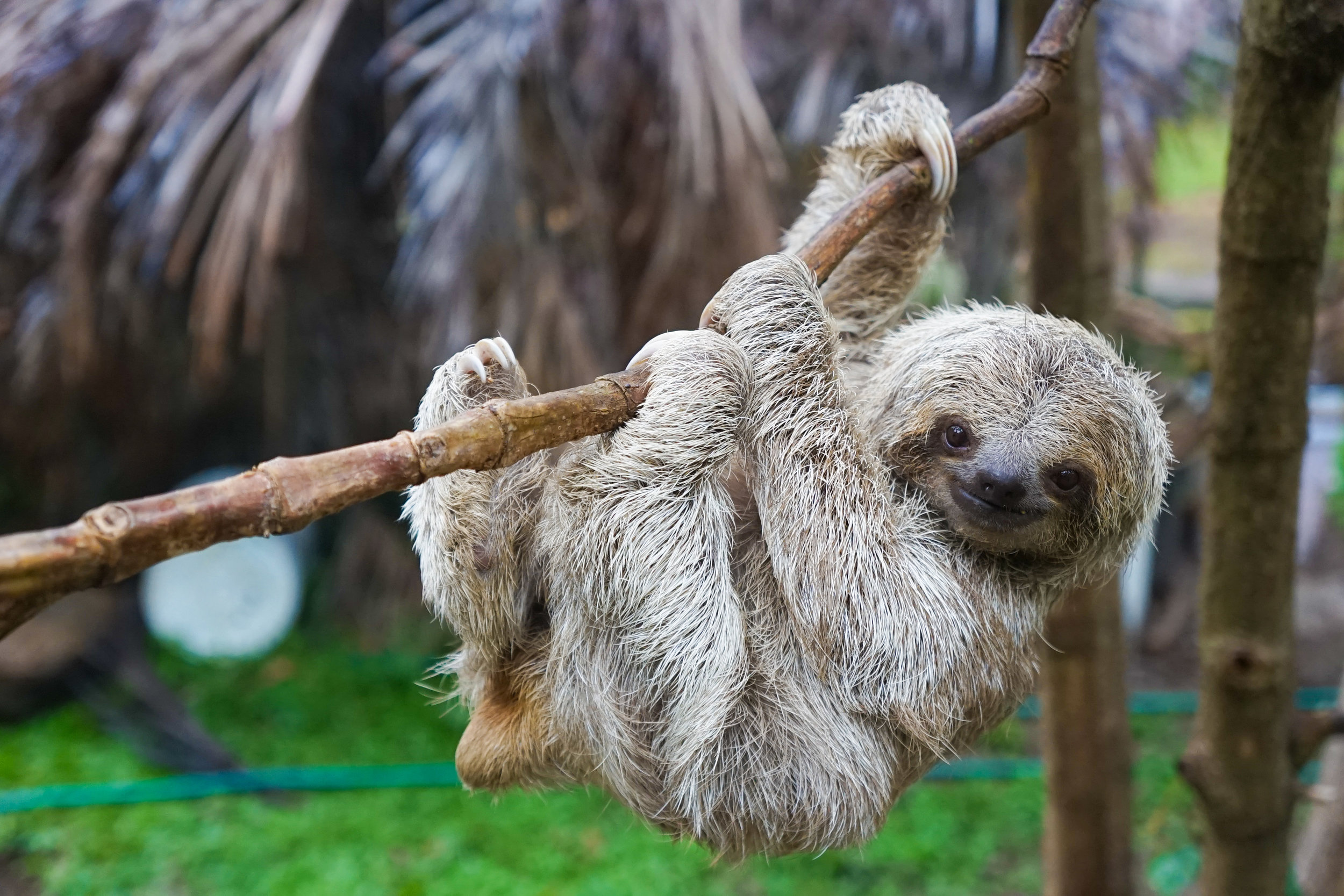Pygmy Three-Toed Sloth
"Here I Am" by Mike Wiesmeier (digital)
“I love the straightforwardness and steadiness of the sloth. I admire how much they seem to take their time and will not be rushed. The soft smile of the sloth in this image is an example of the calm presence that they exude.”
Your purchase is helping Expedition Art and Saving Species purchase land in Sumatra! Learn more about the project.
Habitat
The pygmy three-toed sloth is found in a tiny area in red mangrove forests on Isla Escudo de Veraguas, Panama. They mainly live in trees, although they can walk on the ground and swim.
Family Life
The pygmy three-toed sloths generally live in solitary and do not travel far. Adults only come together to mate, finding each other using loud calls. Three-toed sloths can be distinguished from their distant relatives, the two-toed sloths, by the three digits on their forelimbs, blunter muzzle, and simpler, peg-like teeth. Sloths can be active at any time of the day and spend much of their time sleeping or sedentary.
Lifespan
Little is known about the lifespan or longevity for pygmy-three toed sloths, however other species of sloths have been known to live 30 to 40 years in captivity.
Hunting Habits/Diet
Sloths are arboreal folivores that eat the leaves of a variety of trees. This is an energy-poor diet, and these animals have a very low metabolic rate. Sloths have an unusual means of camouflage to avoid predation; their outer fur is often coated in algae, giving the pelage a greenish tint that helps hide them in their forest habitat and avoid detection. However, when sloths are attacked, they are usually able to survive due to their tough hides, tenacious grips and remarkable ability to heal from grievous wounds.
Population
Only 79 of the world’s smallest sloths are left in the wild.
Fun Fact
Pygmy three-toed sloths are great swimmers.
Why are they Endangered?
The growing tourism industry is the largest potential threat to the species by degrading its habitat. Although the Panama island is uninhabited, fishermen, farmers, lobster divers and local people are thought to hunt the sloths illegally.
Status
Critically Endangered


